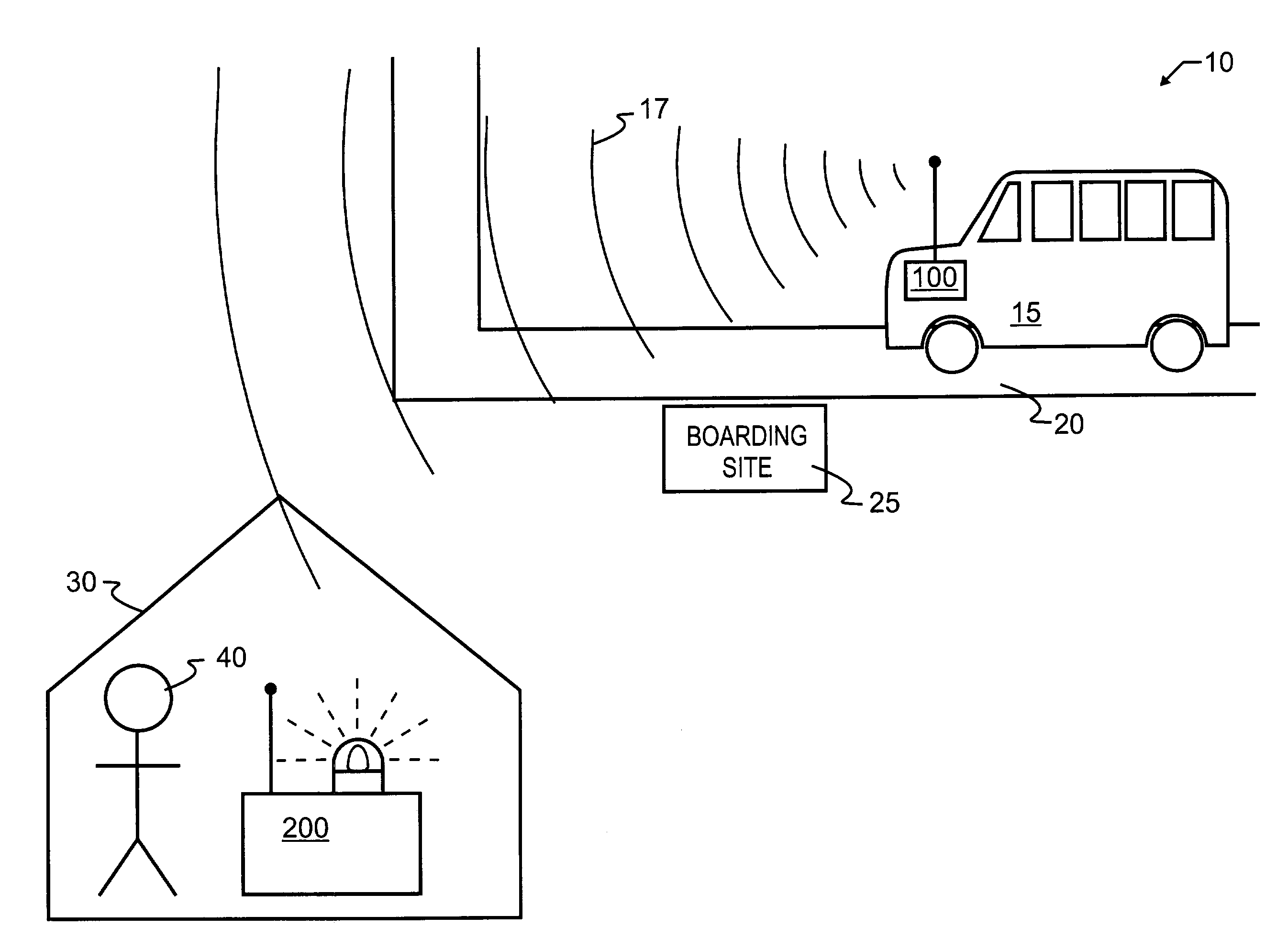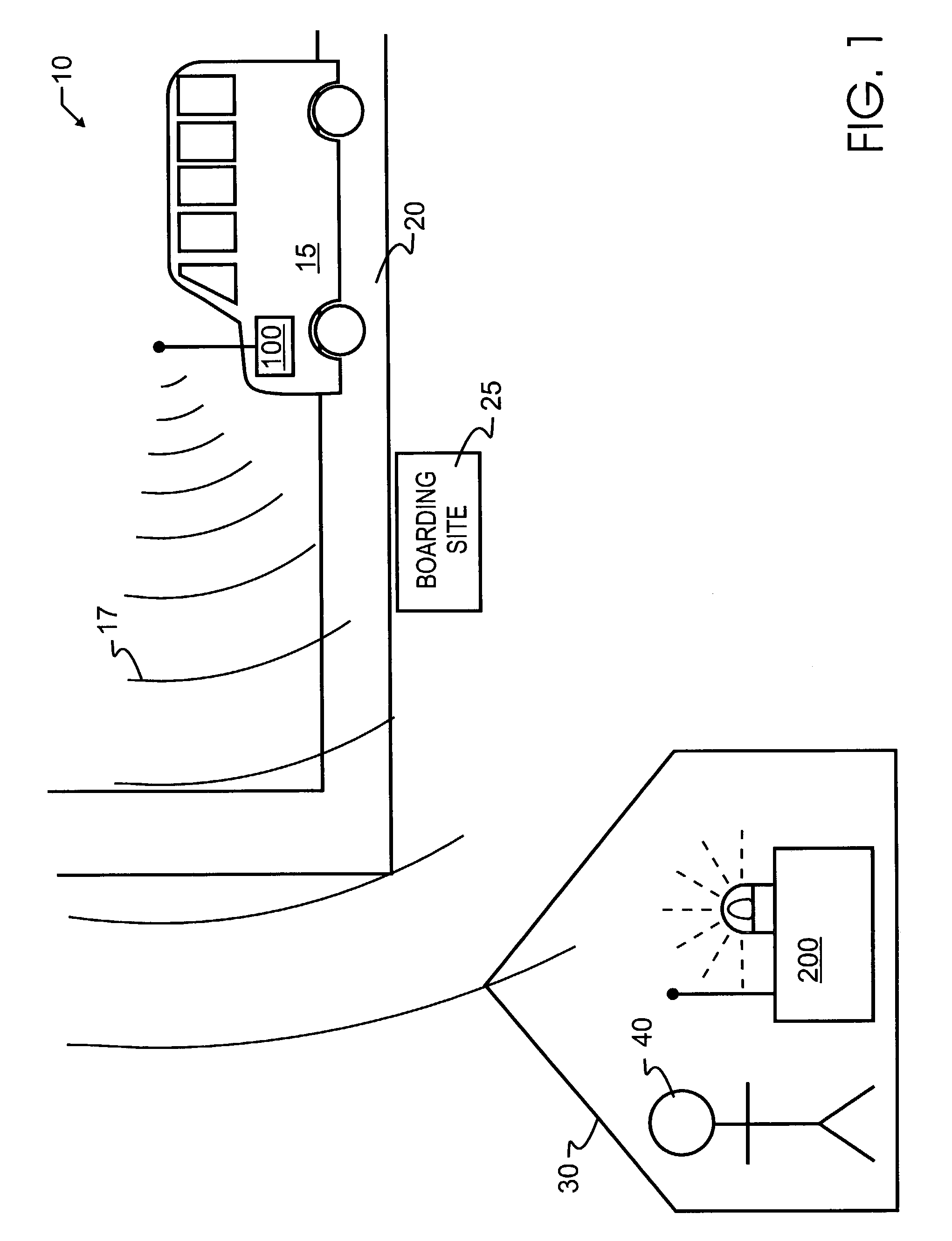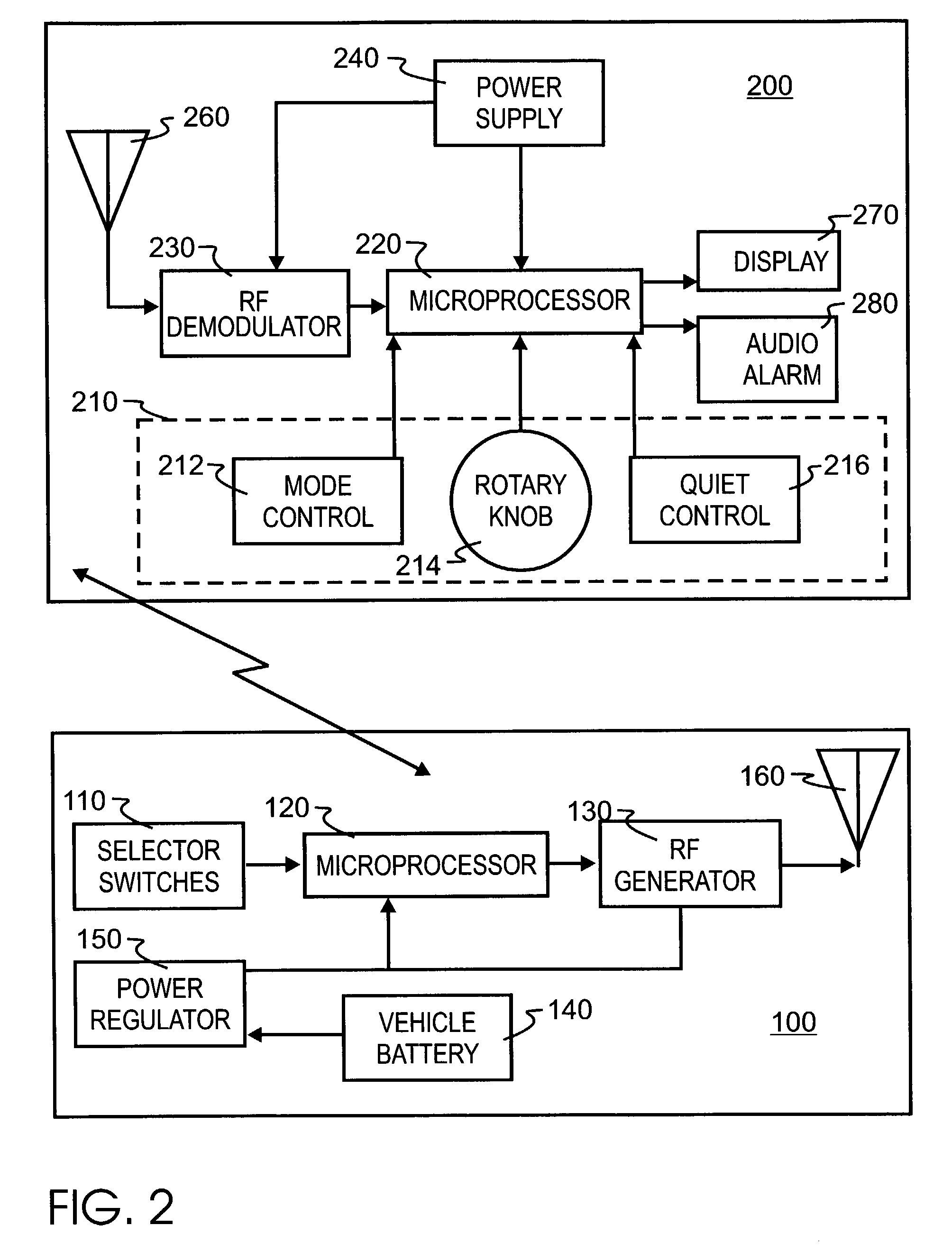Transportation monitoring system for detecting the approach of a specific vehicle
a technology for detecting transportation monitoring, which is applied in the field of electric communication, can solve the problems of not being able to detect the approach not being able to achieve the effect of a specific vehicle, and being less convenient than personal transportation for most ordinary trips, so as to improve the transportation monitoring and alerting system, prevent undesirable re-triggering, and increase flexibility and utility
- Summary
- Abstract
- Description
- Claims
- Application Information
AI Technical Summary
Benefits of technology
Problems solved by technology
Method used
Image
Examples
Embodiment Construction
[0020]Manifested in the preferred system 10 for detecting the approach of a vehicle 15, the present invention provides a relatively low-powered vehicle-carried transmitter unit 100. The particular power level which may be required will depend upon the size of the route traveled, relative spacing between intended stops and the like, though for the purposes of illustration only and not limiting thereto, in the preferred embodiment a transmitter operating at approximately 433 Mhz may be powered for short burst transmissions at a peak power level that will typically be within a range of 100 milliwatts and 5 Watts. Those skilled in the art will understand that this power level will also be dependent upon the sensitivity of receivers 200 that transmitter 100 is being used in association with. For many urban or suburban applications, a range of only a few city blocks may be adequate for providing the intended notice, though much greater distances maybe desired, depending upon the most desi...
PUM
 Login to View More
Login to View More Abstract
Description
Claims
Application Information
 Login to View More
Login to View More - Generate Ideas
- Intellectual Property
- Life Sciences
- Materials
- Tech Scout
- Unparalleled Data Quality
- Higher Quality Content
- 60% Fewer Hallucinations
Browse by: Latest US Patents, China's latest patents, Technical Efficacy Thesaurus, Application Domain, Technology Topic, Popular Technical Reports.
© 2025 PatSnap. All rights reserved.Legal|Privacy policy|Modern Slavery Act Transparency Statement|Sitemap|About US| Contact US: help@patsnap.com



